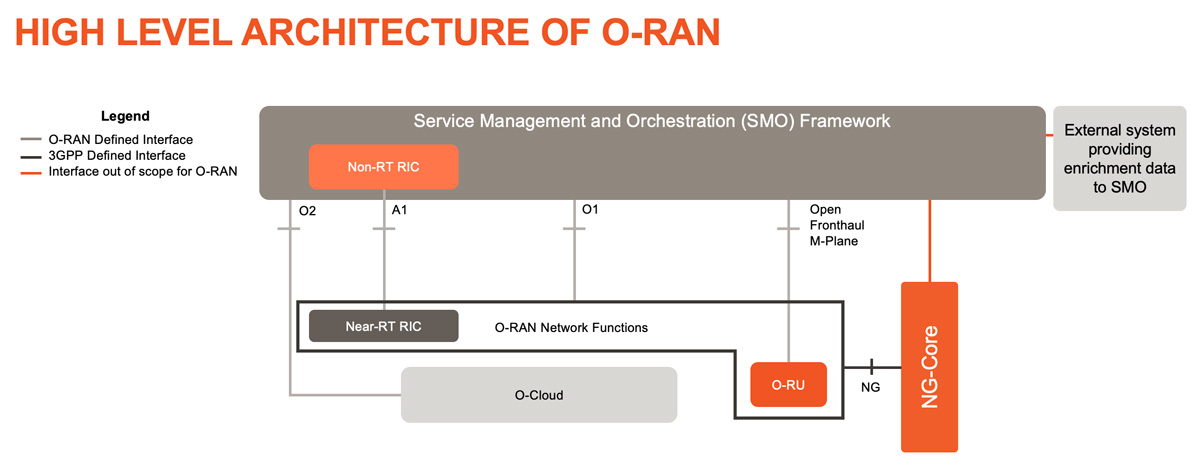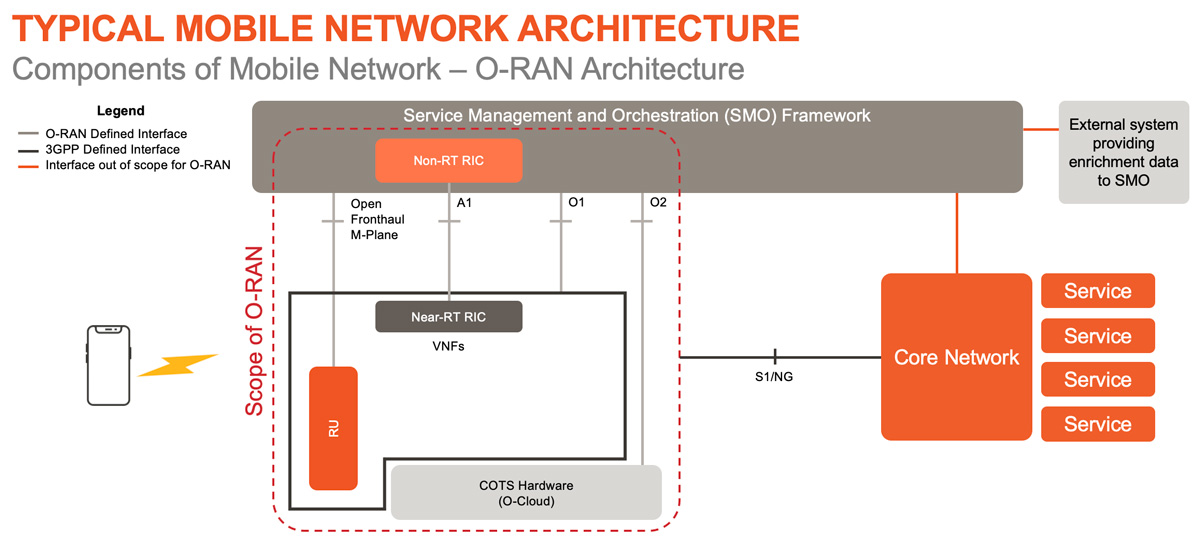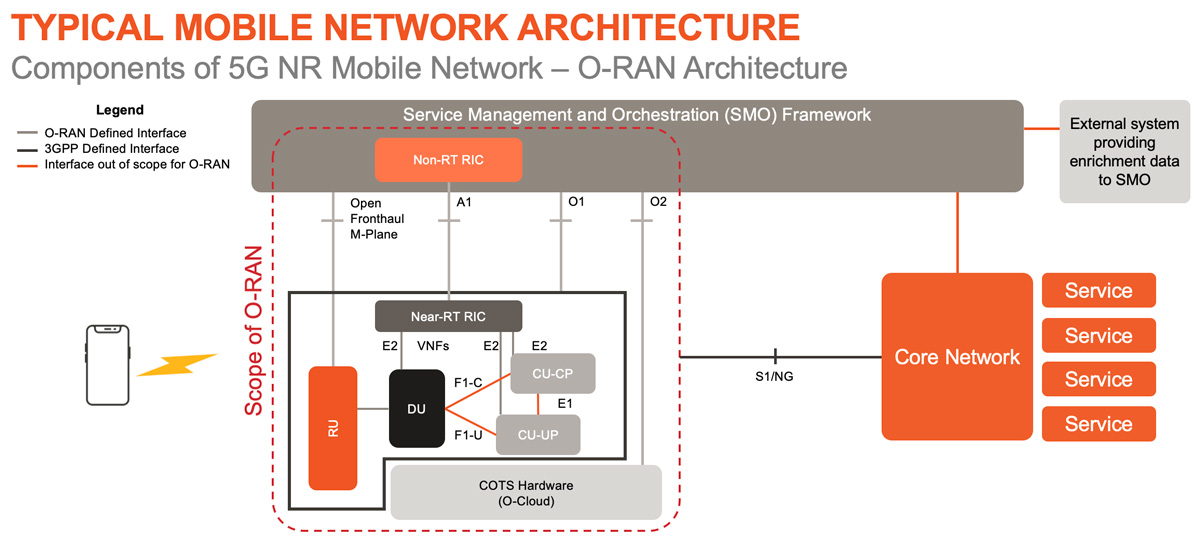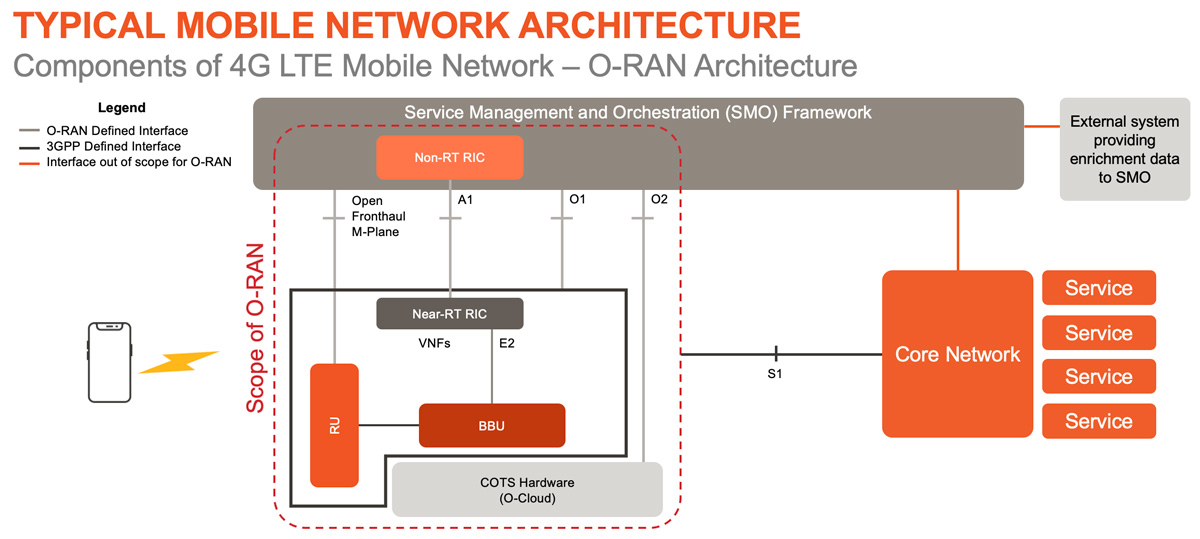Introduction to O-RAN Philosophy
When we released our Open RAN videos, blogs, and eBook in 2020 we did not anticipate the demand that would follow for these resources and the hunger for information. After mulling over the feedback from everyone who got in touch with us, we are launching our O-RAN series which will follow the same approach in terms of videos and blogs.

In the first blog post of this series, we will discuss the philosophy of the O-RAN Alliance. The O-RAN Alliance was formed three years ago when the XRAN Forum merged with the C-RAN Alliance. Since then, the organization has gathered momentum and continued to deliver on its promises. Their latest membership count includes over 270 organizations in the Radio Access Network (RAN) industry, including mobile operators, vendors, and research & academic institutions.
What is important to remember is that the scope of O-RAN is restricted to the Radio Access Network (RAN) components of the network. O-RAN Alliance’s mission statement clearly states that it intends to re-shape the RAN industry toward more intelligent, open, virtualised, and fully interoperable mobile networks. Organizations involved with Research and Development (R&D) within the mobile cellular industry must continue to work with 3GPP specifications in order to provide end-to-end operations and interoperability.

With this background, it is important to understand at a high level which new components and interfaces has O-RAN introduced and why are they needed. While I intend to provide a lot more detail in future blog posts here is a short summary:
Components:
- The Near-Real-Time (Near-RT) RAN Intelligent Controller (RIC) is a logical function that enables near-real-time control and optimization of RAN elements and resources via fine-grained data collection and actions over the E2 interface.
- The Service Management and Orchestration (SMO) system is responsible for RAN domain management. In a Mobile Network, there can be many different management domains such as RAN management, Core management, Transport management, End to End Slicing management, etc.
- The Non-Real-Time RAN Intelligent Controller (Non-RT RIC) is a logical function within SMO that drives the content carried across the A1 interface. It comprises of the Non-RT RIC Framework and the Non-RT RIC Applications (rApps).
- The O-Cloud is defined by the O-RAN Alliance as a cloud computing platform comprising a collection of physical infrastructure nodes that meet O-RAN requirements to host the relevant O-RAN functions, the supporting software components and the appropriate management and orchestration functions.
Interfaces: For the purpose of this blog post, the key interfaces are as follows:
- Open Fronthaul M-plane or Management plane interface between SMO and O-RU.
- A1 Interface between the Non-RT RIC in the SMO and the Near-RT RIC for RAN Optimization.
- O1 Interface between the SMO and the O-RAN Network Functions for FCAPS support.
- FCAPS is based on the ISO model which defines five conceptual areas for managing networks: fault, configuration, accounting, performance, and security.
- O2 Interface between the SMO and the O-Cloud to provide platform resources and workload management.
With this background, we can delve deeper into the architecture and envisage the 5G network.

In a 5G RAN architecture, the BBU functionality is split into two functional units, the distributed unit (DU) and a centralized unit (CU). There are different functional splits that can be used for different layers in the DU and/or CU. The interfaces between the DU and CU and between the CU-CP and CU-UP are all defined by 3GPP. Each of these CU & DU nodes are considered an E2 node.
The O-RAN specs define the E2 node as a logical node terminating the E2 interface. For 5G NR, these include O-CU-CP, O-CU-UP, O-DU while for 4G LTE, it is the O-eNB. Note that in the O-RAN terminology, all O-RAN compliant nodes are prefixed by ‘O-’.
In future O-RAN related blogs and videos, we will look at how the Near-RT RIC hosts one or more xApps which uses the E2 interface to collect near real-time information on a UE basis or a Cell basis, and how these xApps provide value added services. The Near-RT RIC control over the E2 Nodes is guided by the policies and the enrichment data which is provided by Non-RT RIC via the A1 interface.
The following is information on the 4G LTE O-RAN Architecture.

Historically, the RAN vendors had to develop both hardware and software from radio to everything else in the radio access network. This approach limited the amount of innovation and the speed of development. It was also difficult for new entrants to break into the industry. The Open RAN movement allowed newer players to develop a niche product or offering by leveraging open interfaces between the nodes.
The O-RAN Alliance is taking this one step further by not only defining which interfaces are open and what values, message contents can take, but also making the RAN architecture Intelligent, virtualized and fully interoperable.
This approach will benefit MNOs as well as their subscribers by overcoming vendor lock-in issues that in the past have limited their ability to improve coverage, add more capacity, and create new innovative solutions.
Stay tuned for future blogs which will go into further detail about the O-RAN Alliance philosophy and how it is transforming the industry and generating rapid innovations.
Resources: